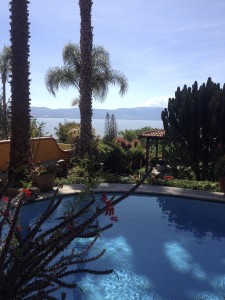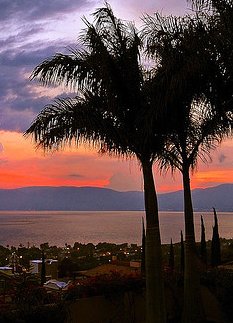Welcome! I’m glad you found me. My name is Karen Blue, and like Madonna and Fabian, I just go by “Blue.”

You’ve probably discovered my site because you’re considering living in and/or retiring in Mexico. Why? Perhaps because:
- You know someone who has moved to or retired in Mexico
- You’ve read one of the many articles about how you can live here comfortably on just your social security
- You’re tired of the winters where you live
- You’re looking for a bit more adventure in your life, or
- You’re just fed up with the consumerism, commercialism and the politics of your home country.
How do I know? I retired here 17 years ago as a single woman at the age of 52. During those years I’ve interviewed hundreds of folks, written two books:
Baby Boomers: Reinvent Your Retirement in Mexico
Midlife Mavericks: Women Reinventing Their Lives in Mexico
and published numerous articles about moving to and living in the Lake Chapala/Ajijic region of central Mexico.
As opposed to other sites, books and articles, my focus is on the experiential aspects of making such a move. My books talk about expat’s dreams, hopes, expectations, fears and then, in a conversational style, we get into the nitty gritty:
- Cost of Living
- Social and Cultural Activities
- Accessibility
- Culture
- Homesickness and Grandkids
- Medical and Insurance
- Banking and Finance
- Crime
Like many other boomers, I was potentially looking at 40 more years of retirement. Our parents’ generation, on the other hand, typically retired at age 65 and expected to live about 10 more years. Today, hundreds of authors and speakers, well-known internet sites, and magazines such as AARP are responding to this new trend, encouraging their readers to plan, not only financially, but also emotionally, spiritually, and physically for a potential long-haul retirement.

When I moved here, the Internet was just in its infancy and there was very limited content. Today, there are tens of thousands of sites available for research on retiring in Mexico. Be careful, though, because many are outdated and the information may no longer be accurate. Always check the dates.
My intent in creating this site is to share –excuse the cliché—the good, the bad and the ugly of moving to and living in the Lake Chapala/Ajijic area. I want to share with you how retirees are filling their remaining years here with purpose passion and yes, still more potential. If you’re still intrigued, then you’ll need to come visit for yourself before making such a decision.
I hope you’ll return often for more glimpses into life in Chapala and Ajijic. Feel free to leave comments or questions for me on this site.
Thanks for your visit.
